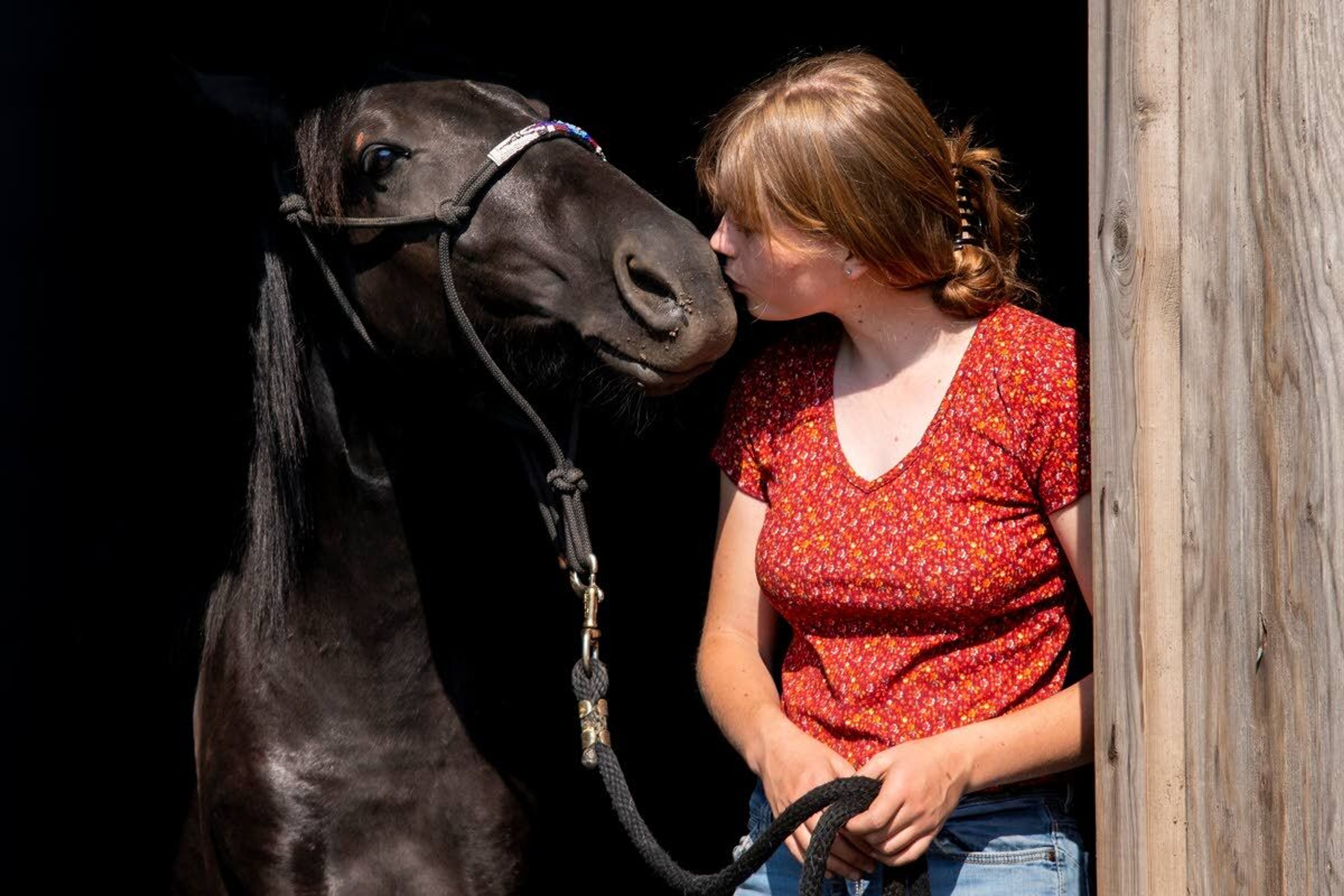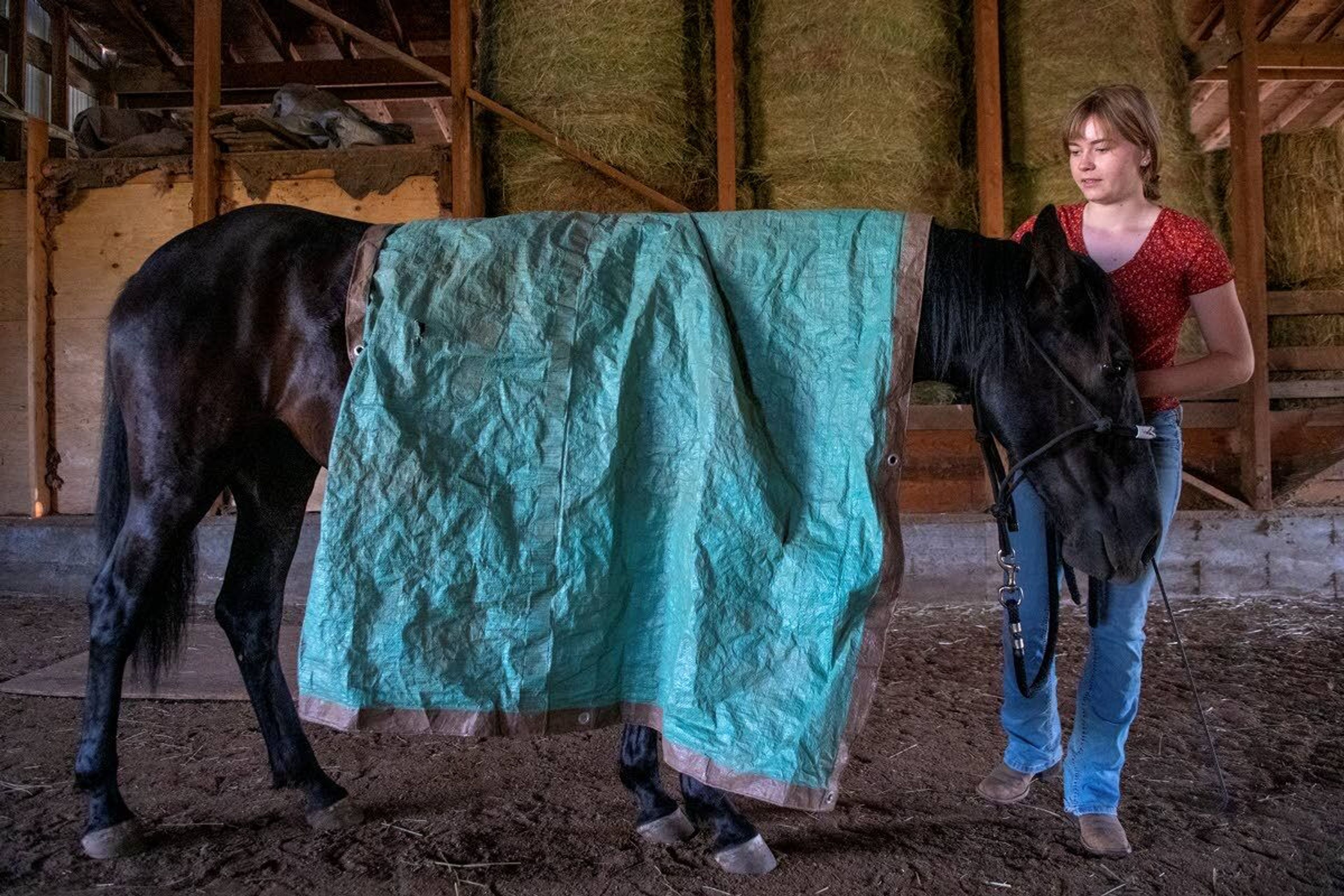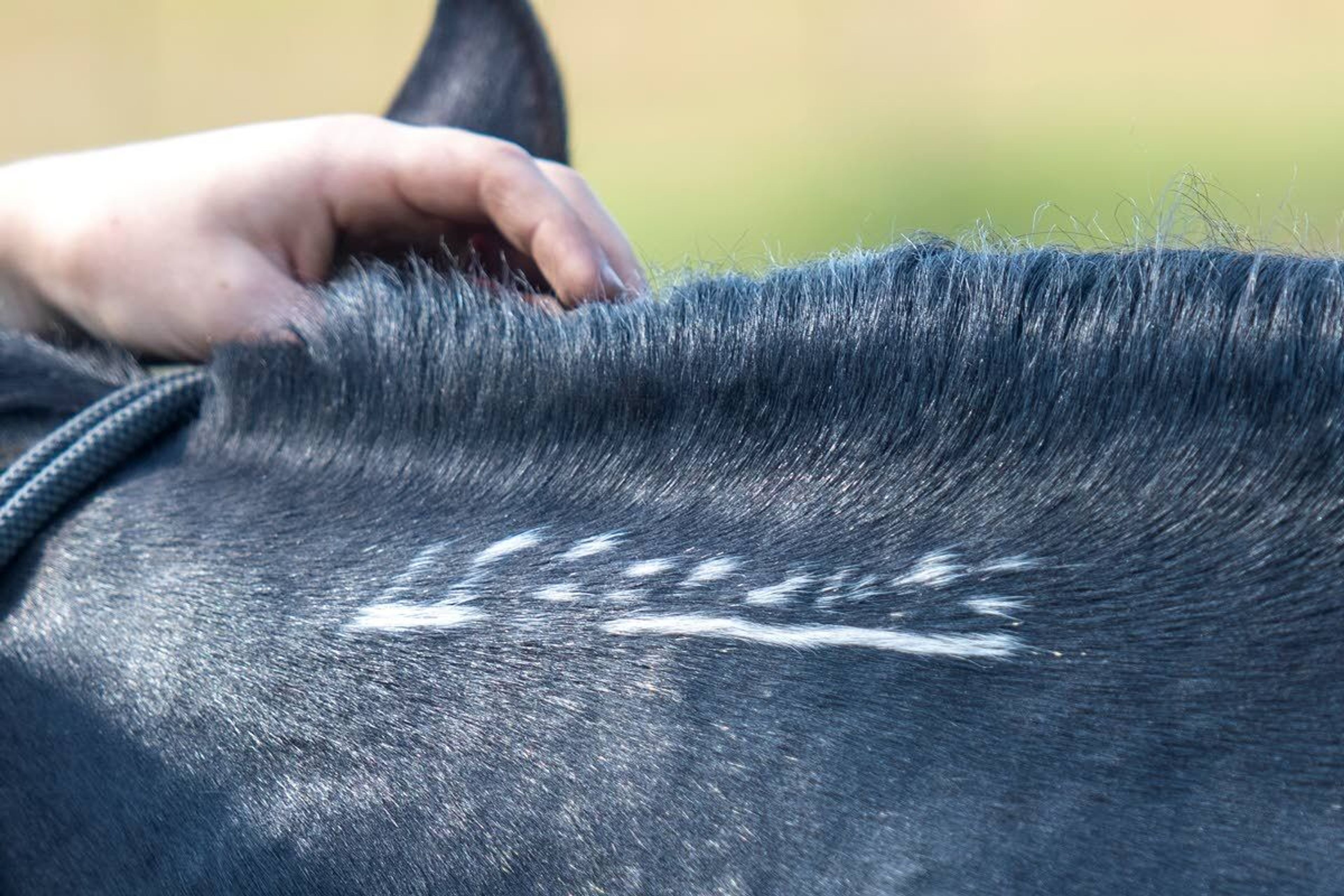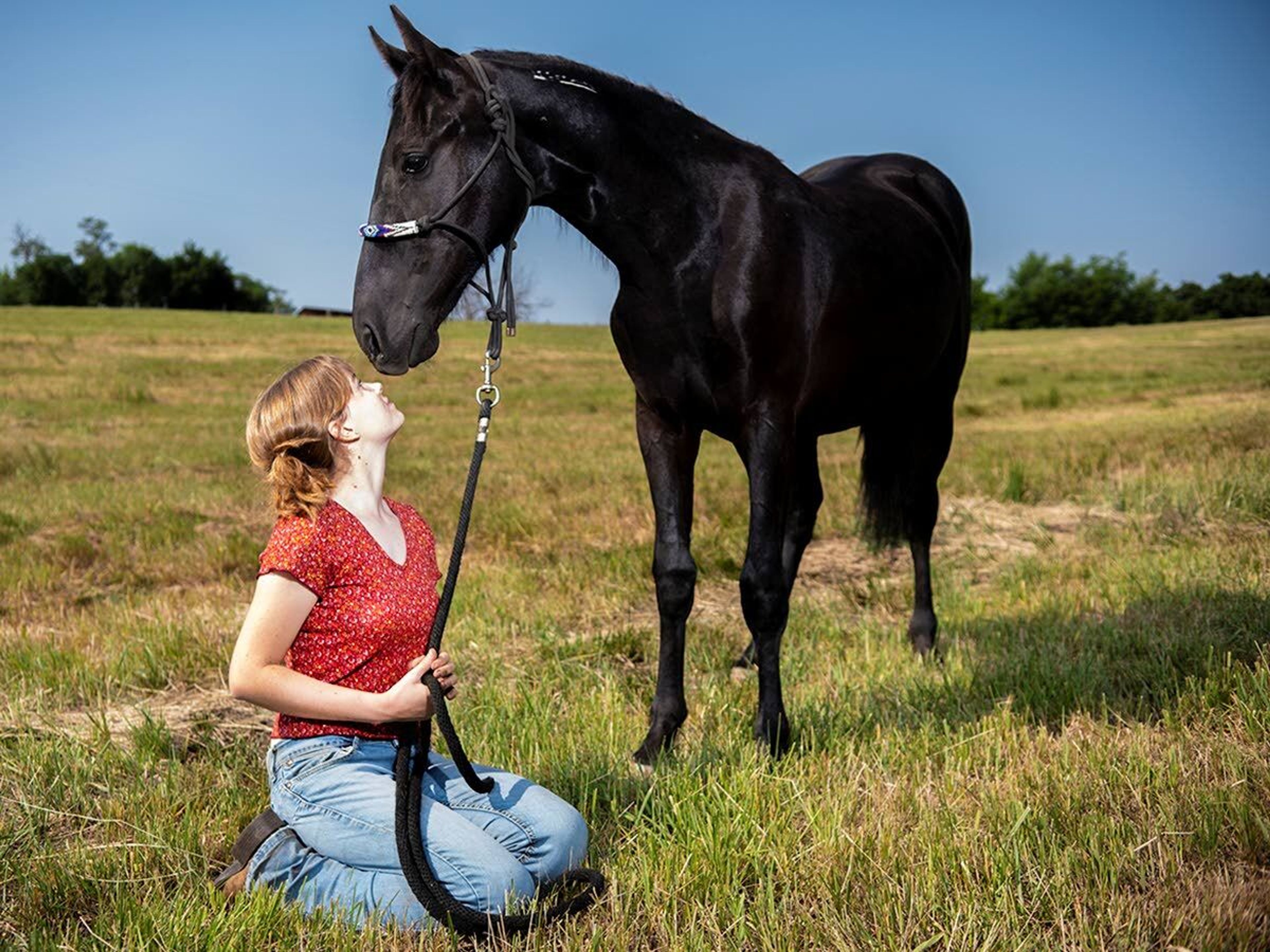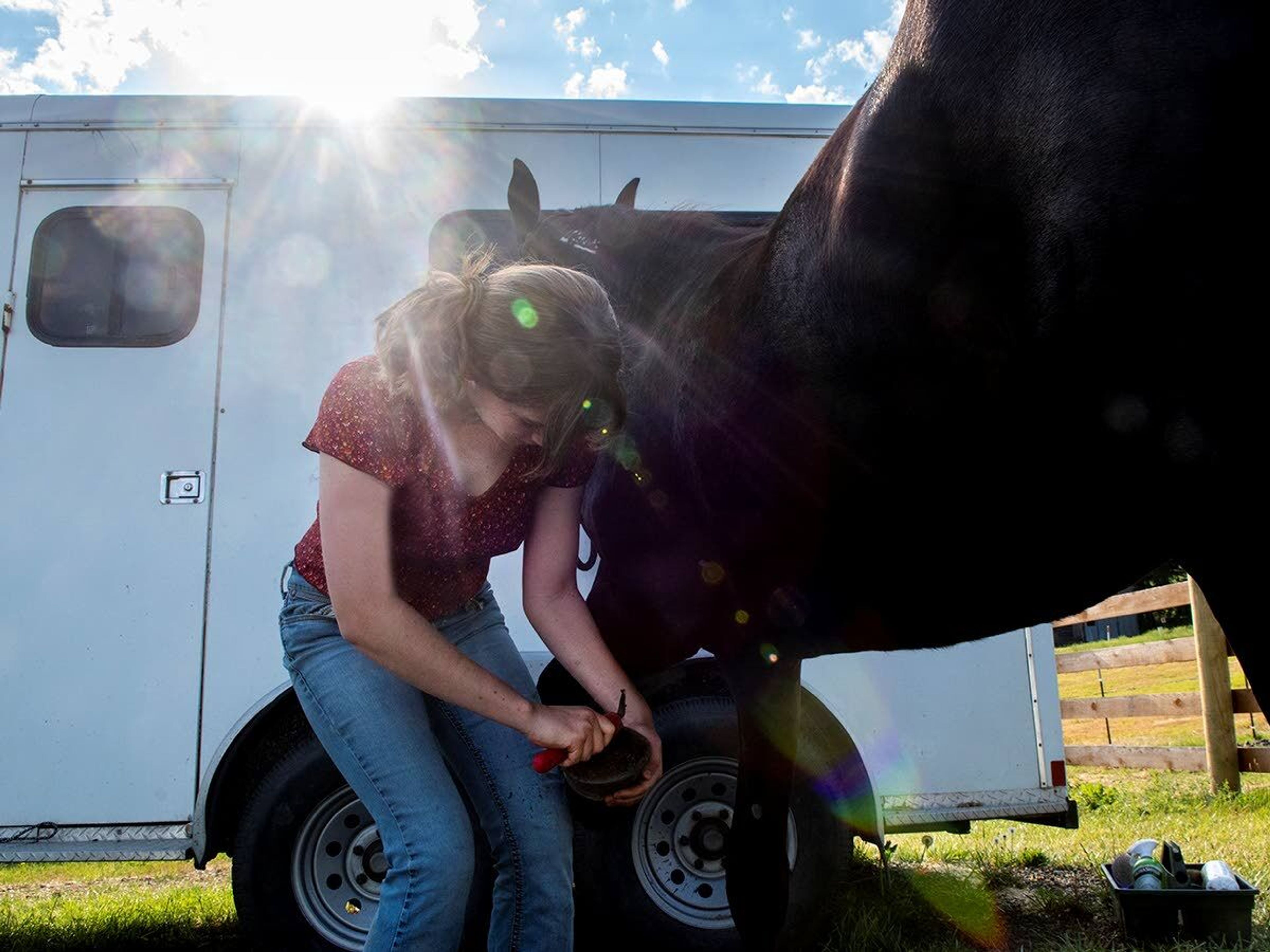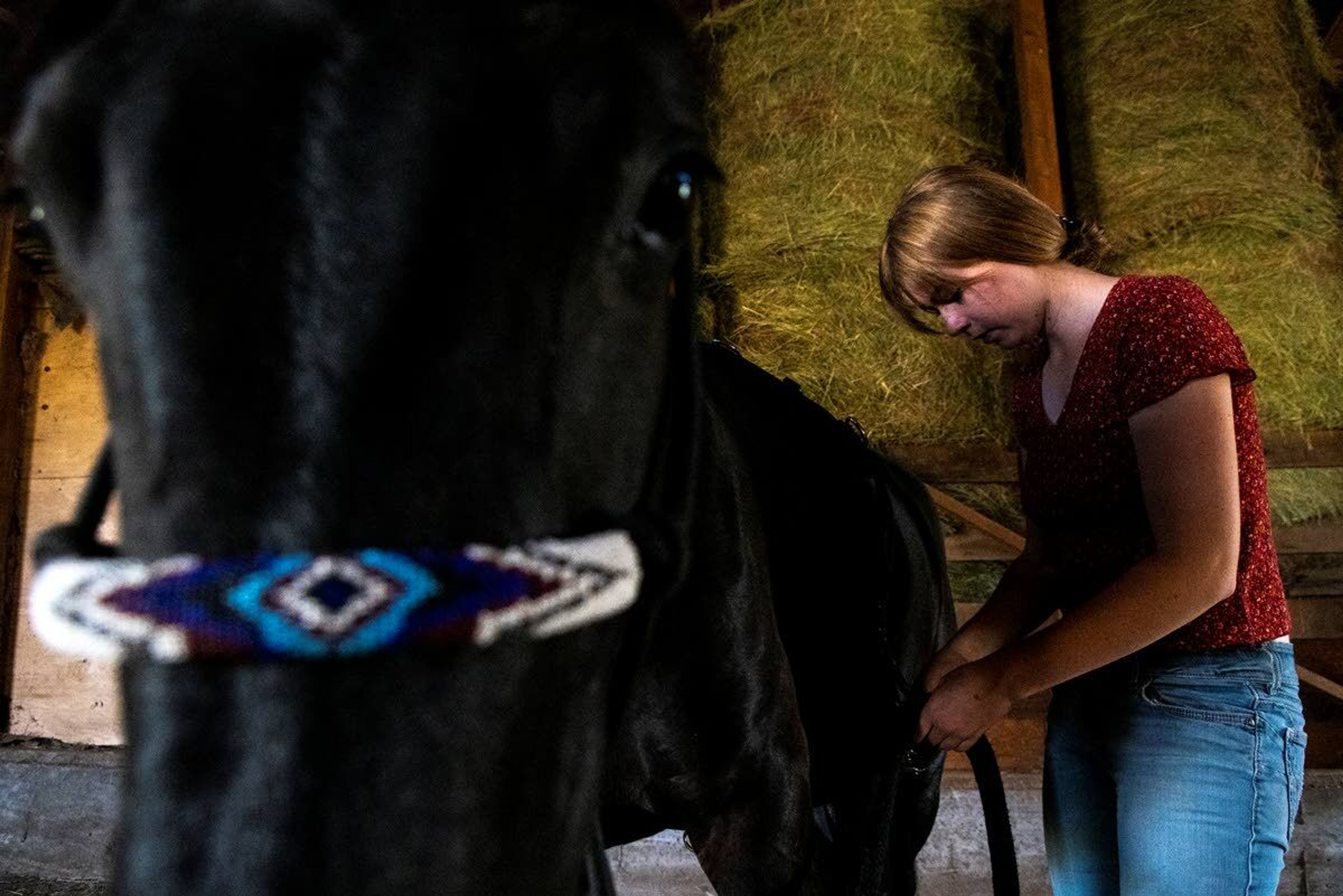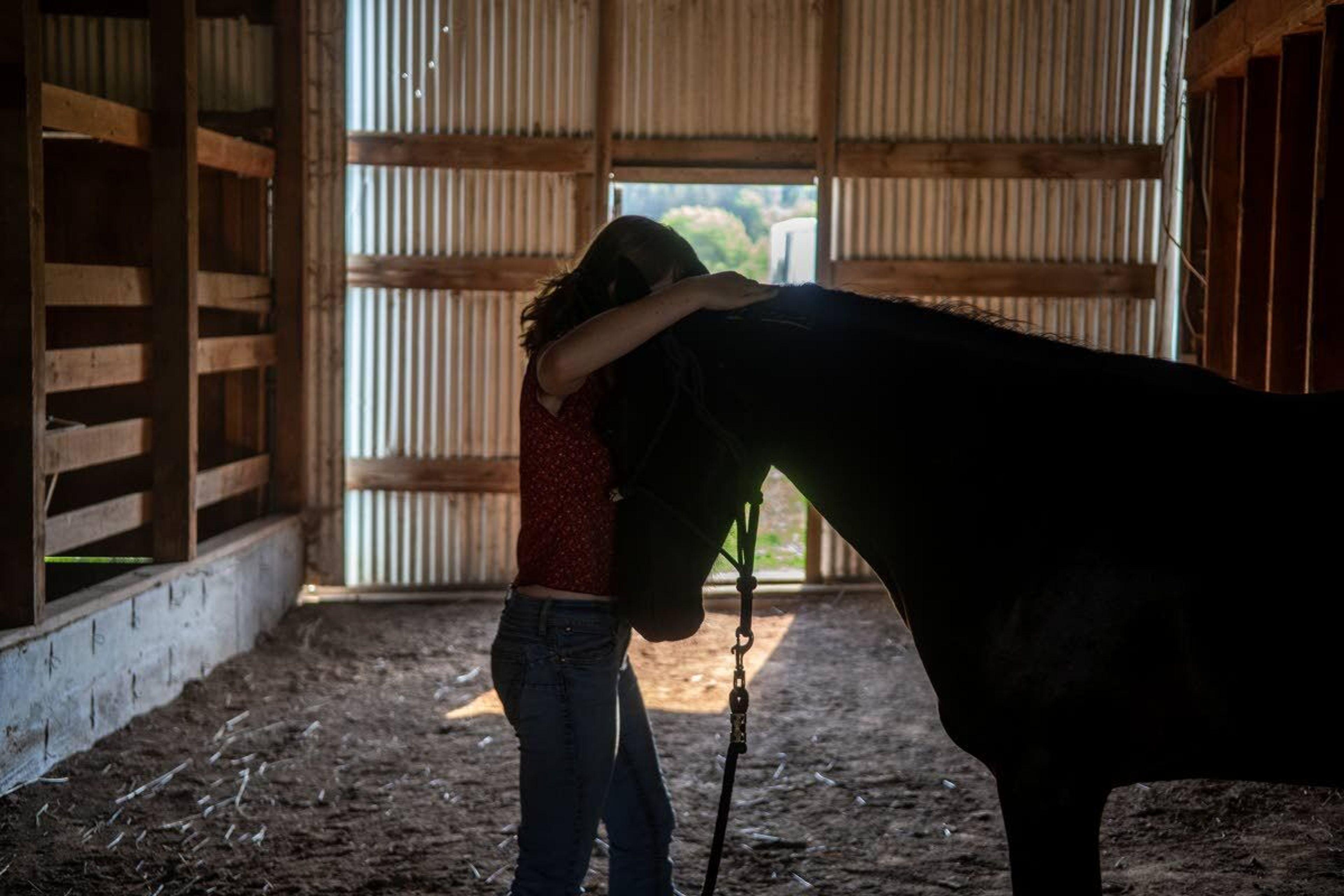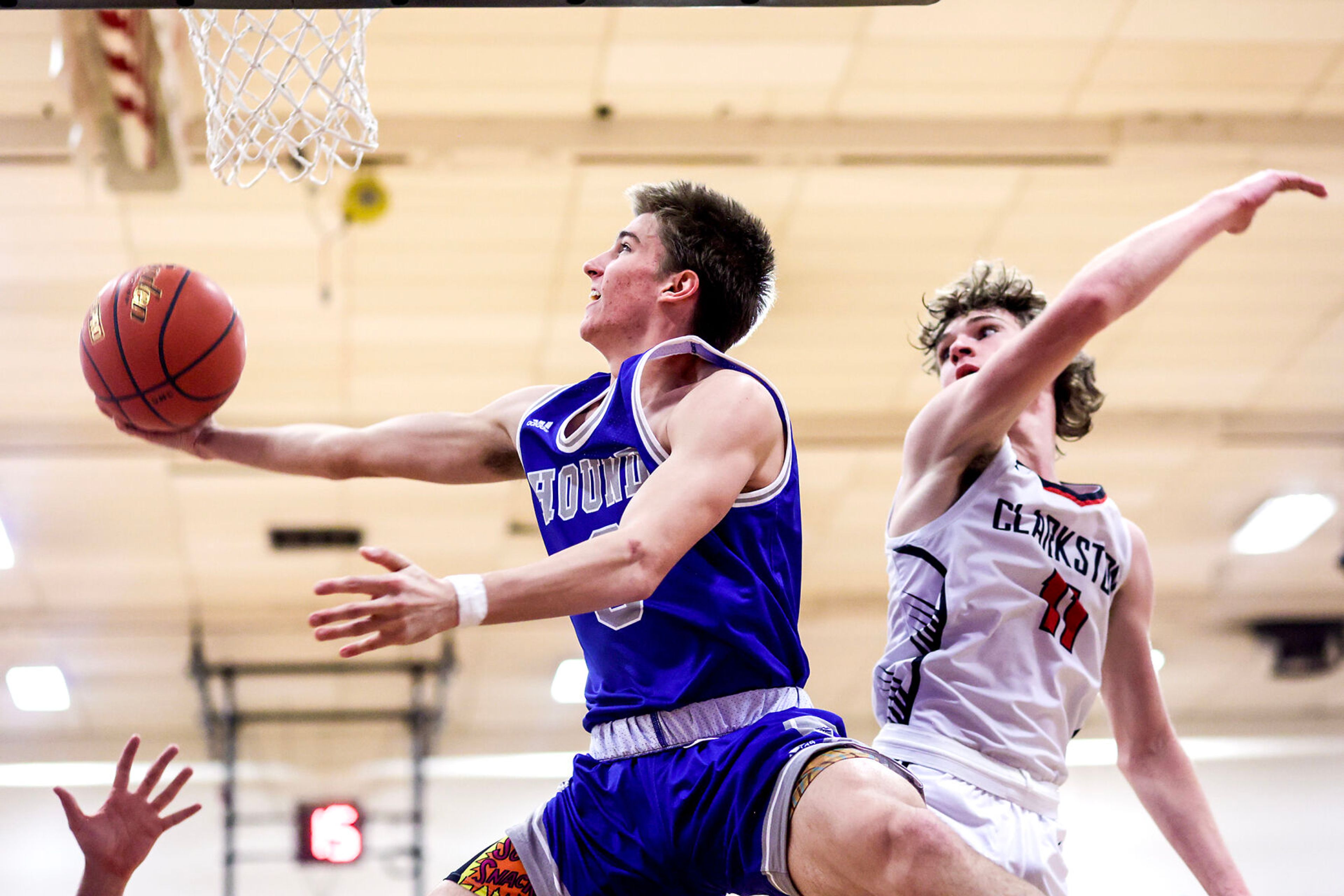Extreme mustang makeover: The horse and her girl
MOSCOW — Maddalena “Lena” Hylton was in class, most likely math or science, during her freshman year of high school when she saw a YouTube video called “100 days with a Mustang.”
“I watched it, and I watched it again,” said Lena, who has ridden horses since she was 7 years old. “I watched every one of those videos on the channel. I probably watched almost every one on YouTube.”
After that, she knew she had to do it — to train a mustang. But she also knew she wasn’t ready, and she didn’t live in an area where she could do it. So it lingered in the back of her mind — until this year.
Lena, now 17 and entering her final year of home schooling, applied over the winter to compete in an event called the Extreme Mustang Makeover and was accepted in March. The competition requires youth ages 8-17 to choose and train a horse for 100 days before presenting three routines in front of judges.
She and her family moved two years ago from Half Moon Bay, Calif., to Moscow, where they settled in a house on the edge of town with 14 acres and built a barn for the three horses — Ranger, Paisley and Arrow — they brought with them, said Lena’s mother, Susie Hylton.
They bought Ranger, Lena’s riding horse, five years ago, and Lena helped retrain the 20-year-old animal, because he had “basically been sitting in a pasture” for seven years and needed a “whole reboot.” She gained valuable horsemanship experience along the way.
Choosing the right one
It took three hours, Lena said.
She arrived April 28 at the corrals in Burns, Ore. The handlers took all the year-old mustangs out of their pens and let them run so Lena could see them. She identified the ones that stood out to her and began narrowing the field.
“(Lyra) didn’t stand out,” Lena said. “She was really nondescript.”
Susie said Lena was unsure about whether to get a gelding or mare. But ultimately, Lena and Lyra picked each other.
“There’s supposed to be a theory that the bond between a mare and a young girl can also be really intense and beautiful,” Susie said.
Lyra’s show name is “Leap of Faith” because Lena chose her on a leap of faith even though she was not in her top picks.
As for Lyra’s actual name, choosing it was simple, Lena said, because she keeps a list of potential horse names. The name is based on the constellation, but pronounced “lee-ra.”
Lyra was wrangled from the Paisley Desert in south-central Oregon. Her coat was bleached brown from the sun when Lena brought her home to Moscow. She was dirty, matted and had small dreads of fur forming along her chest. She was half-starved and incredibly skittish.
A mustang is a wild, free-roaming horse, not a specific breed of horse, said Kaycie Will, marketing and advertising coordinator for the Mustang Heritage Foundation, based in Texas. However, mustangs are still called mustangs after they are gathered and given a freezemark, a white brand on their necks, for identification.
The Extreme Mustang Makeover, with versions held in several U.S. cities, is organized by the foundation, an organization established in 2001 that works to facilitate adoptions for wild horses and burros gathered by the Bureau of Land Management Wild Horse and Burro Program.
Wild horses and burros are overpopulated in some areas managed by the bureau, causing a strain on their ability to be sustained by the land. Handlers from the agency gather wild horses and burros and place them in corrals, where about 50,000 are held. The foundation has helped place about 16,000 of the animals, Will said.
Training
Within the first week of their training, Lena was able to fit a halter around Lyra’s ears and muzzle and get her to walk and pick up her feet. But a lot of the time was spent getting Lyra used to Lena’s presence.
She said it took time to gentle Lyra, getting her used to her touch and generally taming her. At first, Lena could barely get close to her, but now the horse actively seeks out Lena’s touch.
Lyra leans into Lena and closes her eyes when petted. Lyra even nudges Lena’s hand for more when Lena falters.
After they became accustomed to each other, Lena began training Lyra to complete specific moves like pivoting and side-stepping. To do this, Lena waves her lead, a rope attached to Lyra’s halter, on each side of the horse’s body to encourage her to move.
To get Lyra accustomed to loud noises, also called desensitizing training, Lena pops balloons and wrestles a plastic tarp around her. For this specific training, Lena said her dogs and little brother are a lot of help because they are essentially balls of noise.
But training is not always perfect. At one point, Lyra regressed.
Lena quickly found that Lyra was impatient and stubborn, at times creating frustration when she wanted Lyra to do something, and the horse just wouldn’t.
“I definitely have fallen short a few times — that’s part of the experience,” Lena said. “I’m the first person she’s interacted with; I want her experience to be good.”
Lena said she has been working on not getting frustrated when Lyra won’t cooperate. Instead, she stops, slows down and figures out a different way to complete the task, but this time doing it together with Lyra.
“I’m still falling short all the time, but I’m getting there,” she said. “I’m getting better.”
Lena has taken Lyra out on three outings in the last month. They went to Potlatch twice, visiting a professional horse trainer. Lena said the trainer helped her lead Lyra better so they could walk side by side instead of Lyra lagging behind. They also went through the trainer’s obstacle course, which Lena said went well.
They still have a bit more time to train before the competition, but Lena said they are taking it easy the next few days.
The competition
Lena is scheduled to compete Aug. 12-14 in Oklahoma City, Okla. The first two days will consist of competition, and the last day is dedicated to awards. But the actual competition begins much earlier.
While participants train their horses for 100 days before presenting in front of judges, they have to submit four progress reports consisting of photos and written information showing their mustang’s training and growth.
“Our goal is to make it clear that these previously wild horses can be trained and gentled and turned into amazing horses,” Will said.
The first routine of the competition is a handling and conditioning class. This routine will show how well the youth and horse move together by completing small maneuvers, like walking and lifting up their hooves. Judges will also determine the horse’s body condition to ensure it is at a healthy weight and building muscle.
The second routine is a trail class, which is essentially an obstacle course. Competitors will learn the course about a day in advance so they can prepare, Will said.
The third routine, and one Lena is very excited for, is freestyle.
Youths have to prepare their freestyle before the competition, Will said. They pick their own music, costumes and decide their own choreography.
Lena’s freestyle will have a sunflower theme because it is her favorite flower. She is creating a wreath of sunflowers to be placed over Lyra’s back and clasped around her stomach. Lena’s costume will include a dress, cowboy shoes and maybe a hat, but she is also considering wearing a flower headband. She and Lyra will perform to “Sunflower” by Post Malone.
Lena said she is still deciding on the rest of her routine, but she wants to have Lyra lay down at one point, back her into barrels and pop some balloons to show Lyra is not scared.
“I’m honestly just kind of gonna go in there and improvise a little bit,” Lena said. “(Lyra) does better when we wing stuff instead of meticulously plan stuff out.”
Lena will be competing against 30 other youths.
All youth competitors are guaranteed to win $100 just for participating. The top three competitors will win $1,000, and the first-place winner will receive a belt buckle, Will said.
Competitors are also allowed to keep their horses, which is the biggest prize of all. Lena said she will absolutely be keeping Lyra.
Going on the road
Lena, Lyra and Susie will be driving to Oklahoma City for the competition next Sunday; it will be about a three-day drive.
It is common for horses to experience anxiety and weariness during travel, so Lena said she is incredibly nervous. She is also scared Lyra might actually get hurt or sick during the trip.
“We’re going to try to make it as low stress and easy for her as possible,” she said. “But I am worried about her.”
Into the future
When Lena got her, Lyra weighed around 600 pounds. Since then, she has gained about 100 pounds, and Lena said she is excited to see her continue to grow.
“She has such a good mind and brain,” she said.
After the competition, Lena will continue their training, although at a less rigorous pace. They’ll continue working on basic skills, building up to when Lyra, at around 3 years old, will be old enough to potentially ride.
She plans on studying natural horsemanship at the University of Montana Western, in Dillon. The course allows her to bring Lyra along.
Lena said she wants Lyra to be her “everything” horse. She wants to train her in both Western, which includes a bigger saddle for riding like stereotypical cowboys, and English, which includes a smaller saddle and more jumping disciplines.
She said she wants to see Lyra grow into a “super well adjusted” horse, and she wants to grow into an amazing trainer.
“She’s given me help with everything, I have so many more skill sets now,” Lena said. “Everything that she has taught me has been so valuable.”
Carral may be contacted at jcarral@lmtribune.com or on Twitter at @jaycecarral.
